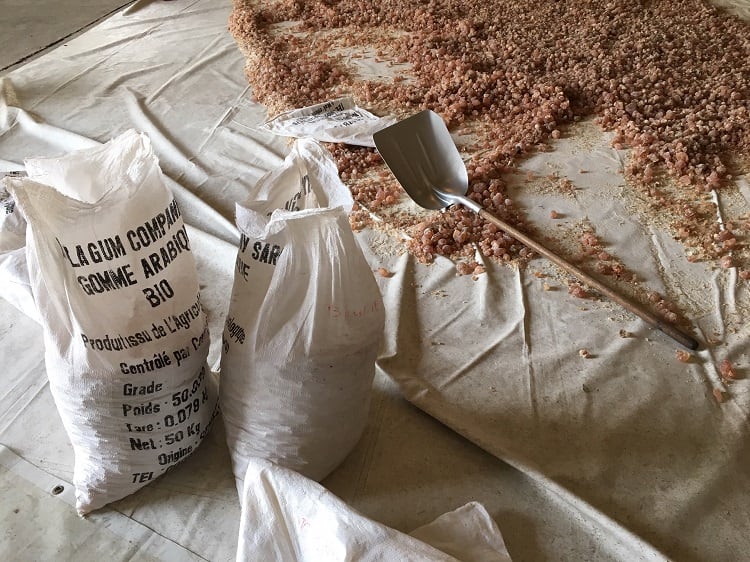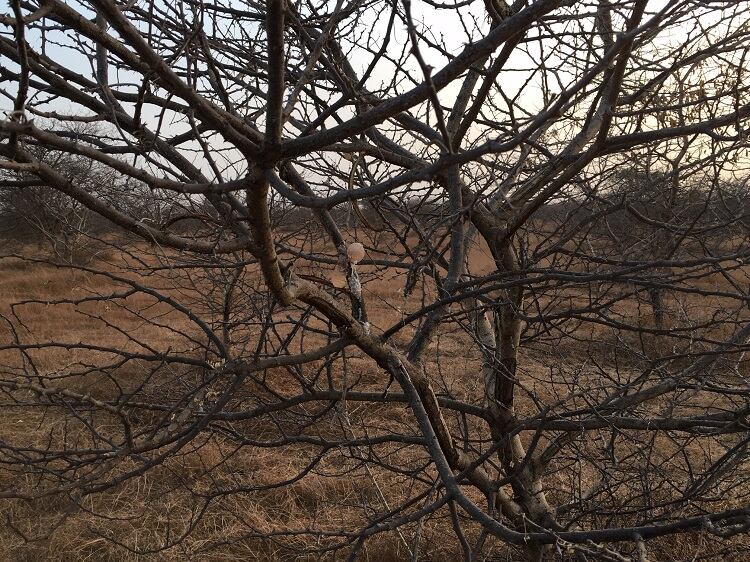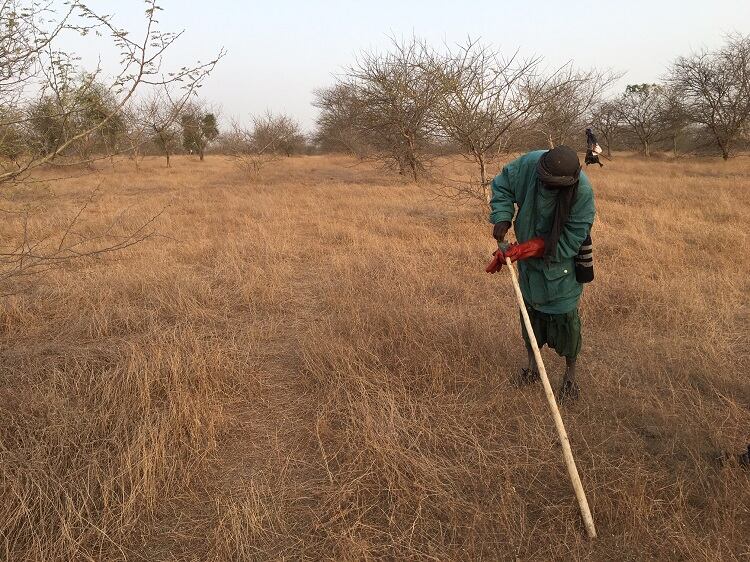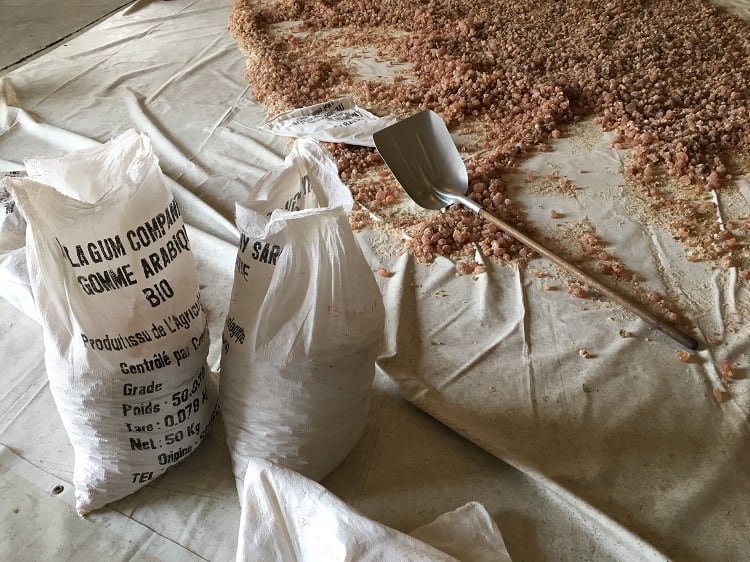Acacia gum wears a number of different hats. The food additive is known as gum arabic, acacia fibre, and E414, and functions as a natural emulsifier, stabiliser, texturiser, and as a source of fibre. Acacia gum can also be used to extend a product’s shelf life and improve mouthfeel.
Having been employed by civilisations since 2650 BC – when it was used to make bandages for Egyptian mummies – today, the exudate’s most ‘critical’ application by FMCGs is as an emulsifier in soft drinks, according to CEO of Alland & Robert, Frédéric Alland.
Alland is the fifth-generation to head up acacia gum supplier Alland & Robert, which was founded more than 130 years ago. The family-run French business sources, processes and sells acacia gum to 80 countries worldwide.
In other categories, the additive is well known as a sugar-free coating for chewing gum, the CEO continued during a visit to a Senegalese plantation earlier this year. “There are also newer applications, such as its use as a natural fibre. A lot of companies are asking for organic vegetable products, and gum acacia is a pretty good candidate for that.”
But looking beyond soft drinks and chewing gum, acacia gum production can serve other purposes in arid countries, Alland suggested, such as improving soil fertility, reducing desertification, and helping address the food waste agenda.
Reversing soil degradation and desertification
Gum acacia production can benefit the environment in a number of ways, particularly in areas where climate change has led to extended periods of drought, or where uncontrolled farming and over-grazing has degraded soil.
The ingredient is sourced from specific species of acacia trees across the African ‘gum belt’, which stretches from Senegal to Eritrea. It can also be produced in the dry and semi-arid regions of south Sahara.
In these regions, desertification is of growing concern. However, acacia trees, which capture nitrogen, can help nourish the soil and revive some of its lost fertility. Plantations also act as windbreakers, which serve to prevent further erosion.
The UN Food and Agriculture Organization (FAO) recognised the potential for acacia trees to boost sustainability in climate change-effected reasons when it instigated the Acacia Operation Project.
The pilot aimed to develop and nurture gum acacia production in gum producing countries, including Chad, Senegal, and Sudan. The long-term goal is to provide support to food security, poverty alleviation, and soil degradation control in these regions.

Tree sustainability
While 99% of Alland & Robert’s acacia gum comes from wild trees, Aisyla Gum plantation in Senegal contributes to that 1% of plantation-sourced gum.
Starting in 2004, the plantation now boasts 4,000 hectares, with approximately 400 trees per hectare. And it is here that Aisyla Gum’s general manager, Ibrahima Ka, explained how his workers’ harvest techniques help support the trees’ health.
Gum acacia is produced through a process known as tapping. This involves cutting through the outer layers of the branches at a specific time of year, he told FoodNavigator.
“The tapping will happen with the tree starts losing its leaves. This means when the tree is stressed.” The process occurs during October and November and lasts for approximately one month. “You cannot do it during anytime of the year, only when the dry wind starts blowing and the leaves [are] falling.”
If ‘all the conditions are met’ – meaning that the plantation benefited from a ‘very good rainy season’ earlier that year – acacia gum will be exuded from the tree 15 days after tapping. The tree does this to prevent further moisture loss.
“You can [harvest the gum] up to five times in the year,” Ka continued. “From mid-December up to early May, you can do the harvest.” The gum is then dried, weighed, and sent for processing in Alland & Robert’s facilities in Normandy.
For sustainability purposes, Ka’s team only taps once per year, “because we want the tree to be here longer”, we were told. “Others will be doing it twice a year, but that might mean the tree won’t live as long. Our interest is that the trees live long.”
Tapping the branches, rather than the trunk, also helps to ensure a longer lifespan. “If you do it on the trunk, you will kill the tree,” the general manager explained. “It’s better to cut on the branches.”
Additionally, the workers rotate the part of the bark they remove, so that the tree has time to regenerate before the next tapping season.

The trees’ end of life also feeds into the sustainability agenda. After having grown for at least five years, and a maximum of seven, the trees can be tapped for between 25 and 35 years. At that time, Ka said they are either used for charcoal, construction, of for furniture.
Food waste
Gum acacia also has the potential to address the food waste agenda, according to the company, by extending the shelf life in bread.
In trials commissioned by Alland & Robert on two types of acacia gum – seyal and Senegal – the ingredients were added in concentrations of 1%, 3% and 6% to sandwich bread and gluten-free bread.
The results, published in peer-reviewed journal LWT – Food Science and Technology, revealed that adding one to 3% of seyal acacia gum could result in gains of up to 25% softness. Short-term preservation of bread, which typically has a shelf-life of just a few days, was also improved by 50%, noted the company.
“Gum acacia helps with water retention, providing a longer shelf life in bread,” deputy general director Charles Alland told FoodNavigator, suggesting the additive could particularly serve bakery operators in arid climates.
To learn more about acacia gum production, you can watch FoodNavigator’s video from a recent trip to Senegal.



